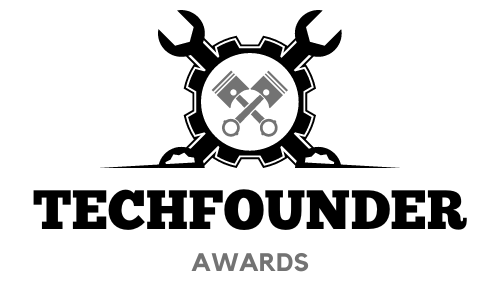Understanding Blockchain Technology: A Beginners Tutorial

What Is Blockchain Technology and How Does It Work?
Blockchain technology is a revolutionary concept that has gained significant attention in recent years. It is the underlying technology behind cryptocurrencies like Bitcoin, but its potential applications extend far beyond just digital currencies. So, what exactly is blockchain technology and how does it work?
At its core, a blockchain is a distributed ledger that records transactions across a network of computers. Each transaction is stored in a “block,” which is then linked to the previous block, creating a chain of blocks – hence the name “blockchain.” This chain of blocks forms a secure and transparent record of all the transactions that have taken place.
One of the key features of blockchain technology is its decentralization. Unlike traditional centralized systems, where a single authority controls the ledger, blockchain operates on a peer-to-peer network. This means that no single entity has control over the data, making it highly resistant to manipulation or tampering.
The process of adding new blocks to the chain is known as “mining.” This involves solving complex mathematical problems that require significant computational power. Once a block is added to the chain, it is immutable, meaning that the data it contains cannot be altered or deleted. This makes blockchain technology highly secure and trustworthy.
Furthermore, blockchain technology utilizes cryptographic techniques to ensure the integrity and security of the data. Each block contains a unique digital signature, and the entire chain is encrypted, making it virtually impervious to hacking or fraud.
In summary, blockchain technology is a decentralized, secure, and transparent system for recording and verifying transactions. Its potential applications extend to various industries, including finance, healthcare, supply chain management, and more. As this technology continues to evolve, its impact on the way we conduct transactions and share information is likely to be profound.
The Basics of Blockchain: A Step-by-Step Guide for Beginners
Blockchain technology has gained immense popularity in recent years, revolutionizing various industries and becoming a hot topic of discussion. For beginners, understanding the basics of blockchain is crucial to grasp its potential impact and applications. At its core, a blockchain is a decentralized, distributed ledger that records transactions across a network of computers. This article provides a step-by-step guide for beginners to comprehend the fundamental concepts of blockchain technology.
First and foremost, a blockchain comprises a chain of blocks, each containing a list of transactions. These transactions are stored in a chronological and immutable manner, ensuring transparency and security. Each block is linked to the previous one, creating a chain of blocks, hence the term “blockchain.” This structure makes it extremely difficult for any single entity to alter the information, promoting trust and reliability in the system.
The next crucial aspect to understand is the decentralized nature of blockchain. Unlike traditional centralized systems, blockchain operates on a peer-to-peer network, where every participant (or node) has a copy of the ledger. This inherent decentralization ensures that there is no single point of failure and eliminates the need for intermediaries, making transactions more efficient and cost-effective.
To add a new block of transactions to the blockchain, a process called “consensus” is employed. Various consensus mechanisms, such as Proof of Work (PoW) or Proof of Stake (PoS), ensure that all nodes agree on the validity of the new block. Once a consensus is reached, the new block is added to the chain, and the transactions become a permanent part of the blockchain.
Additionally, blockchain technology utilizes cryptographic techniques to secure the data within the blocks. Each block contains a unique identifier called a hash, which is generated based on the contents of the block. Any alteration to the block would change its hash, alerting the network to the tampering attempt. This cryptographic security adds another layer of protection to the integrity of the blockchain.
In conclusion, grasping the basics of blockchain is essential for anyone looking to comprehend the potential and implications of this groundbreaking technology. With its decentralized, transparent, and secure nature, blockchain has the potential to disrupt numerous industries and redefine the way we conduct transactions and share information.
Exploring the Potential of Blockchain for Novice Users
Blockchain technology has undeniably revolutionized the way we perceive and conduct transactions. For novice users, exploring the potential of blockchain can be both intriguing and enlightening. Many people associate blockchain solely with cryptocurrencies, such as Bitcoin, but its applications reach far beyond the realm of digital currencies. The decentralized and immutable nature of blockchain makes it an ideal candidate for secure and transparent record-keeping across various industries.
One of the most compelling aspects of blockchain for novice users is its potential to streamline processes and enhance security. By leveraging blockchain, individuals and organizations can achieve greater efficiency in tasks such as supply chain management, identity verification, and even voting systems. The distributed ledger system ensures that data remains tamper-proof and easily accessible, offering a level of transparency and trust that traditional centralized systems struggle to match.
Furthermore, blockchain technology opens up new possibilities for financial inclusivity, allowing individuals who lack access to traditional banking systems to participate in the global economy. This has the potential to empower marginalized communities and drive economic growth in regions where financial infrastructure is scarce.
As novice users delve into the world of blockchain technology, they will discover its disruptive potential in reshaping industries and fostering innovation. Understanding the basics of blockchain sets the stage for exploring its diverse applications, from smart contracts to decentralized applications, providing a glimpse into the future of secure and transparent digital ecosystems.



